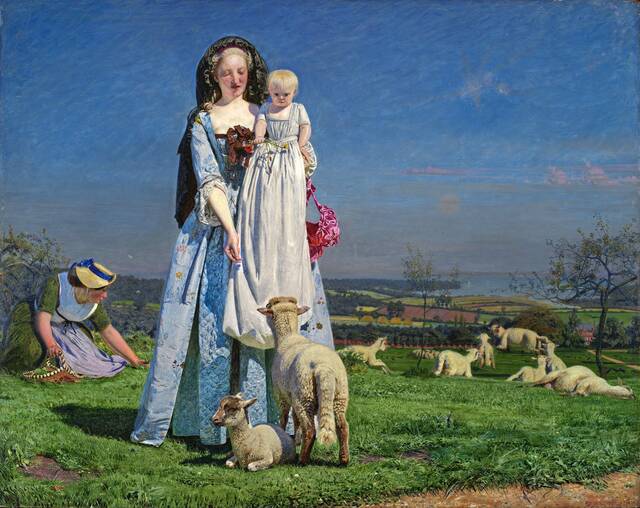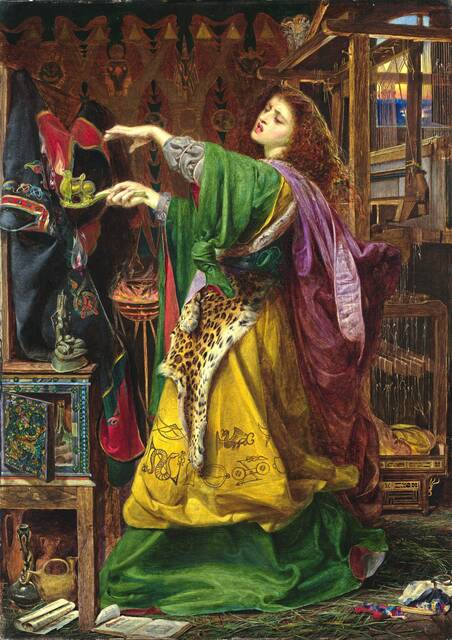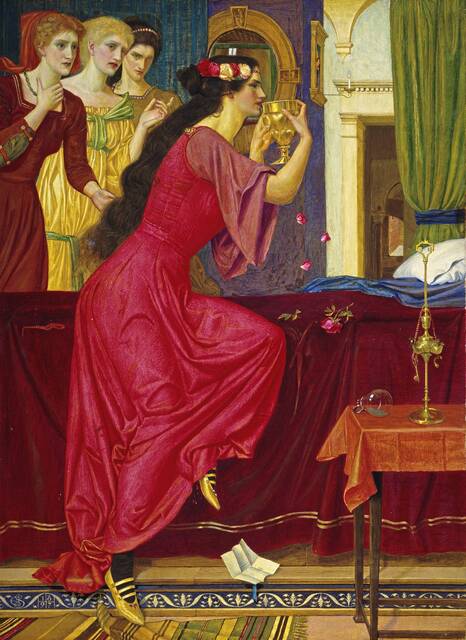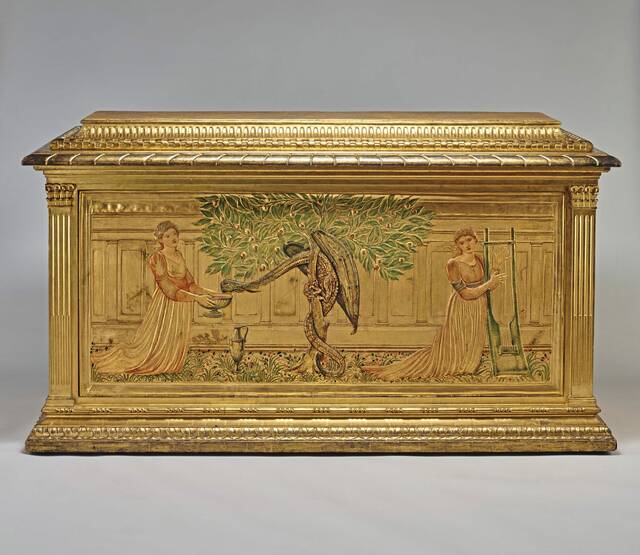Newest Frick Pittsburgh exhibit features 'Victorian Radicals'
Adorning the green velvet walls is a selection of paintings and drawings. Encased just steps away are stained glass, silver and crystal objects. Textiles, jewelry and decorative arts also are showcased throughout the rooms.
Many of these items have never been exhibited outside of the United Kingdom.
They are featured in “Victorian Radicals: From the Pre-Raphaelites to the Arts & Crafts Movement.” The exhibit at the Frick Pittsburgh in Point Breeze will be on display through Jan. 30. It contains four sections: The First Industrial Nation, Pre-Raphaelite Avant-Garde, Secular Ministry and Utopias for New Century.
The art poses questions about gender, class, relationship with nature, and the roles of art and craftsmanship in the machine age.
There are more than 100 works in the collection from Birmingham, England. The earliest is from 1848, and the latest is from 1910. The city pioneered the development of steam power, mechanization and mass production. It held the world’s first model factory.
As guests walk through the galleries, they might be able to sense the turmoil that some artists felt about making something by hand, versus art created by a machine. Anything mass-produced was thought of as “gaudy because handmade was considered better,” said Dawn Brean, chief curator and director of collections for the Frick Museum.
The collection includes pieces of Victorian fine and decorative art and works by the Pre-Raphaelites. The Pre-Raphaelites influenced artists and makers, particularly in Birmingham – which played a role in the Arts & Crafts movement, which evolved during the late Victorian period.
Young artists worked to restore building, decoration, glass-painting, poetry, wood-carving and metalwork alongside painting and sculpture.
The Pre-Raphaelites rebelled against old master painters and wanted paintings to feel believable and contemporary. The Pre-Raphaelite Brotherhood was founded in 1848 by a group of young painters that included William Holman Hunt, John Everett Millais and Dante Gabriel Rossetti.
Artists of this period “challenged and rejected traditional academic styles. They looked at the relationship between nature, art, and humanity,” according to curators.
They often used friends as models and posed figures. They painted settings from nature, Brean said.
Pre-Raphaelite Henry Wallis created an oil painting “Chatterton” depicting young poet Thomas Chatterton on his deathbed. There wasn’t a known portrait of the 17-year-old Chatterton. Wallis asked friend George Meredith to model. Wallis’ painting “The Stone Breaker” is an oil-on-wood painting. Wallis, who was also a teacher at the Birmingham Government School of Design, painted it as “an outraged critique of the treatment of the poor in Victorian England.” Those unable to find other employment were often condemned to break stones to create road surfaces.
“This is how people were treated,” Brean said. “This is a powerful piece. This show is impactful. It is stunning and visually rich. It has dramatic storytelling.”
The traveling exhibit is organized by the American Federation of Arts and Birmingham Museums Trust. It is supported by a grant from the National Endowment for the Arts. The Frick is the final stop for the tour, which began in late 2018.
Masks are required indoors for visitors over the age of 2 and proof of covid-19 vaccination or a recent negative covid-19 test is required for certain indoor activities.
Tickets are $15 for adults, $13 for seniors/students/military, $8 for children 16 and under. Children under 5 are free.
Timed ticketing is recommended here.
The museum is offering several programs such as “Victorian Radicals Free Family Day” from 10 a.m. to 5 p.m. on Nov. 13. “In Conversation: Radical Women — The Pre-Raphaelite Sisterhood” is from 7 p.m. to 8 p.m. on Nov. 30. A panel will discuss contributions to Pre-Raphaelite art.
A variety of programs can be found here.
JoAnne Klimovich Harrop is a TribLive reporter covering the region's diverse culinary scene and unique homes. She writes features about interesting people. The Edward R. Murrow award-winning journalist began her career as a sports reporter. She has been with the Trib for 26 years and is the author of "A Daughter's Promise." She can be reached at jharrop@triblive.com.
Remove the ads from your TribLIVE reading experience but still support the journalists who create the content with TribLIVE Ad-Free.





